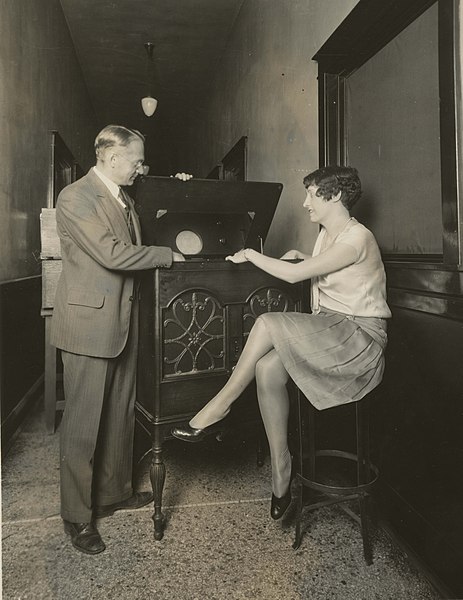The concept of television is the work of many individuals in the late 19th and early 20th centuries. The first practical transmissions of moving images over a radio system used mechanical rotating perforated disks to scan a scene into a time-varying signal that could be reconstructed at a receiver back into an approximation of the original image. Development of television was interrupted by the Second World War. After the end of the war, all-electronic methods of scanning and displaying images became standard. Several different standards for addition of color to transmitted images were developed with different regions using technically incompatible signal standards.
Television broadcasting expanded rapidly after World War II, becoming an important mass medium for advertising, propaganda, and entertainment.
Family watching TV, 1958
Ferdinand Braun
Vladimir Zworykin demonstrates electronic television (1929).
Manfred von Ardenne in 1933
Paul Julius Gottlieb Nipkow was a German technician and inventor. He invented the Nipkow disk, which laid the foundation of television, since his disk was a fundamental component in the first televisions. Hundreds of stations experimented with television broadcasting using his disk in the 1920s and 1930s, until it was superseded by all-electronic systems in the 1940s.
Nipkow c. 1884
Nipkow's 'disc' from the patent application of 1884
A television receiver using a Nipkow disk in the Tekniska museet, Stockholm







